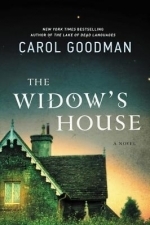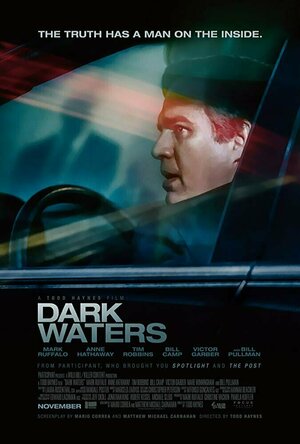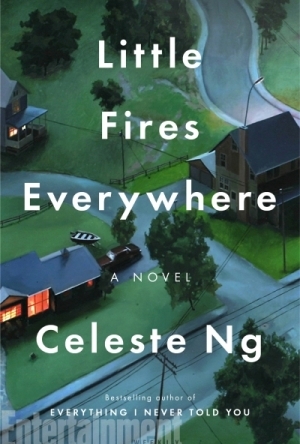Search

Catwoman: Soulstealer - DC Icons Book 3
Book
Sizzling with action and suspense, #1 New York Times bestselling author SARAH J. MAAS delivers a...
young adult
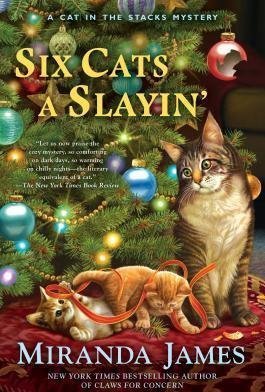
Six Cats a Slayin'
Book
Charlie Harris and his Maine Coon cat, Diesel, are busy decking the halls for the holidays when an...
Kristy H (1252 KP) rated The Widow's House in Books
Dec 24, 2017
crazy (1 more)
fascinating
Jess and Clare Martin met at Bailey College, in the Hudson River valley, but have been living in New York for years. Jess wrote a successful first novel not long after graduation, but that money has long been spent. He's been working on his second book for ages; it's long overdue, and he needs a new muse. So the two decide to move back to the Hudson River area, where Jess can focus on the book without distractions. They take on duties as caretakers at Riven House, the home of their former college professor, Monty. They can live in a nearby cottage in exchange for helping the elderly Monty with chores. But the setup has its own issues: it's Monty, after all, who wrote a review of Jess' first book that torments him to this day. And as they settle in, Clare begins to hear a baby crying at night and see shadowy figures around the pond of Monty's property. As she investigates local history, she thinks what she sees may be tied to the house's tormented past. The locals say the place is haunted and destroys everyone who stays there. Are Clare and Jess next?
You know how sometimes you start a novel and immediately know, from the first page, that you'll enjoy it? THE WIDOW'S HOUSE was that way for me. It sucked me in immediately and kept me interested throughout; I read it in about 24 hours. The book is filled with complicated characters, starting with Clare. You start to realize she's the ultimate unreliable narrator, but are never able to tell exactly how much. She appears unhappy with her selfish author husband and her marriage. She had a rough childhood--growing up in the Hudson Valley not far from Monty's estate, which has clearly affected the way she sees the world. The entire story is told from her point of view, and we're stuck with all events being filtered through her lens. It's genius really, and it is a refreshing change from so many novels lately that change narrators and time periods. You find yourself working and guessing with Clare as she unravels local history and the events unfolding at Riven House.
The novel is certainly told in the Gothic tradition. I first fell for Goodman via her excellent novel, The Lake of Dead Languages, and this book reminded me of that one in some ways. Unlike some Gothic novels, you do not have to suspend much disbelief as the creepy events unfold around Clare and Jess. There are parts of this book that are incredibly spooky, and it's quite well-done. I loved that I was frantically flipping the pages, constantly second guessing everything and wondering what was happening. There are some great twists that shock you, even as you're still trying to figure things out in you're head (much like Clare). This novel will leave you guessing. It's crazy and confusing, but fascinating and incredibly hard to put down. It's completely enjoyable and stays with you after you've finished it, going over various plot points. Highly recommend.
You know how sometimes you start a novel and immediately know, from the first page, that you'll enjoy it? THE WIDOW'S HOUSE was that way for me. It sucked me in immediately and kept me interested throughout; I read it in about 24 hours. The book is filled with complicated characters, starting with Clare. You start to realize she's the ultimate unreliable narrator, but are never able to tell exactly how much. She appears unhappy with her selfish author husband and her marriage. She had a rough childhood--growing up in the Hudson Valley not far from Monty's estate, which has clearly affected the way she sees the world. The entire story is told from her point of view, and we're stuck with all events being filtered through her lens. It's genius really, and it is a refreshing change from so many novels lately that change narrators and time periods. You find yourself working and guessing with Clare as she unravels local history and the events unfolding at Riven House.
The novel is certainly told in the Gothic tradition. I first fell for Goodman via her excellent novel, The Lake of Dead Languages, and this book reminded me of that one in some ways. Unlike some Gothic novels, you do not have to suspend much disbelief as the creepy events unfold around Clare and Jess. There are parts of this book that are incredibly spooky, and it's quite well-done. I loved that I was frantically flipping the pages, constantly second guessing everything and wondering what was happening. There are some great twists that shock you, even as you're still trying to figure things out in you're head (much like Clare). This novel will leave you guessing. It's crazy and confusing, but fascinating and incredibly hard to put down. It's completely enjoyable and stays with you after you've finished it, going over various plot points. Highly recommend.
Gareth von Kallenbach (980 KP) rated Dark Waters (2019) in Movies
Nov 28, 2019
Dark Waters, the screenplay developed from the New York Times Magazine article: The Lawyer Who Became DuPont’s Worst Nightmare. The article tells of Robert Bilott (Mark Ruffalo), a corporate environmental lawyer, who headed the years long battle against DuPont in one of the landmark cases that held the company accountable for their actions.
Bilott, is visited by a farmer, Wilbur Tennant (Jim Azelvandre), who was an acquaintance of his Grandmother. As a child, he visited her home in West Virginia during the summers and had fond memories of that farm. Robert, having worked with DuPont on many cases, felt confident that he would be able to sort out the situation for Tennant. What he does not realize until he visits Wilbur’s farm is that the situation is more dire than he had known.
Wilbur had arrived with multiple VHS tapes recording the various issues that were happening to his farm animals. Bilott witnesses the mass graves that littered Tennant’s farm from his herd that had died from various illnesses. Wilbur is convinced that the reason is the dump that DuPont has created next to his property.
Mark Ruffalo’s portrayal of Bilott is an exercise in subtlety. He becomes more purpose driven once his investigation and research in the information that DuPont had sent due to discovery. Anne Hathaway plays Sarah Bilott, Robert’s wife and steadfast partner. Over the years, Sarah had been supportive, however as the case drags on and Rob’s pay gets cut repeatedly, the strain begins to show.
This film has a stellar cast. From Tim Robbins, as Tom Terp, the managing partner at the firm, Victor Garber as DuPont’s in-house counsel. Mare Winningham as Darlene Kiger, a lead plaintiff in the class action suit and Bill Pullman as Harry Dietzler, lead counsel for the plaintiffs.
This movie has the quality that awards season loves. It is a David vs. Goliath, under dog wins story. Mark Ruffalo does a great portrayal of a man who initially does not want to pursue the case, then shifts to the defender of the people.
This movie is along the lines of Erin Brockovich and Norma Rae.
4.5 out of 5 Stars
Bilott, is visited by a farmer, Wilbur Tennant (Jim Azelvandre), who was an acquaintance of his Grandmother. As a child, he visited her home in West Virginia during the summers and had fond memories of that farm. Robert, having worked with DuPont on many cases, felt confident that he would be able to sort out the situation for Tennant. What he does not realize until he visits Wilbur’s farm is that the situation is more dire than he had known.
Wilbur had arrived with multiple VHS tapes recording the various issues that were happening to his farm animals. Bilott witnesses the mass graves that littered Tennant’s farm from his herd that had died from various illnesses. Wilbur is convinced that the reason is the dump that DuPont has created next to his property.
Mark Ruffalo’s portrayal of Bilott is an exercise in subtlety. He becomes more purpose driven once his investigation and research in the information that DuPont had sent due to discovery. Anne Hathaway plays Sarah Bilott, Robert’s wife and steadfast partner. Over the years, Sarah had been supportive, however as the case drags on and Rob’s pay gets cut repeatedly, the strain begins to show.
This film has a stellar cast. From Tim Robbins, as Tom Terp, the managing partner at the firm, Victor Garber as DuPont’s in-house counsel. Mare Winningham as Darlene Kiger, a lead plaintiff in the class action suit and Bill Pullman as Harry Dietzler, lead counsel for the plaintiffs.
This movie has the quality that awards season loves. It is a David vs. Goliath, under dog wins story. Mark Ruffalo does a great portrayal of a man who initially does not want to pursue the case, then shifts to the defender of the people.
This movie is along the lines of Erin Brockovich and Norma Rae.
4.5 out of 5 Stars

The Girl
Book
In this searing and surprising memoir, Samantha Geimer, "the girl" at the center of the infamous...
Deborah (162 KP) rated Bosworth Field and the Wars of the Roses in Books
Dec 21, 2018
For starters, the book is entitled Bosworth Field & the Wars of the Roses. Discussion of Bosworth is pretty much restricted to one short chapter and about the first third of the book is taken up with an over-detailed account of the events leading up to the Wars of the Roses; if Rowse is concerned about 'Wars of the Roses' being a misnomer, perhaps he should look to his own title! Yes, the events from the disposition of Richard II in 1399 and the usurpation of his throne by Bolingbroke do have an impact on later events, but a third of the book? Do we really need to know the ins and outs of Sir John Oldcastle's Lollard leanings - I fail to see how this is relevant.
Rowse's chapter on Shakespeare must be at least as long, if not longer, than his chapter on Bosworth. The fact that he obviously sincerely believes that one can gain a credible understanding of history from Shakespeare cycle of plays was almost enough to make me drop the book in astonishment! How can one take him seriously?!
He is also ready to give every credit to the supposed work of More. Even here he falls down by claiming that the bodies of the 'princes in the tower' were discovered in the exact place More said! If you read this work you'll find that the opposite is true - they are in the exact place More said they were NOT! The fact that there isn't a shred of evidence that anyone killed the two princes is evidently a small matter to Rowse. He mentions the great turncoat, Sir William Stanley (at this point step-uncle to Henry Tudor) being executed s a result of the Perkin Warbeck debacle, but fails to mention that Sir William is imputed to have said that if Warbeck really was Richard of York, he would not fight against him. Of course he doesn't mention this - he has to keep reminding us that EVERYONE believed Richard III guilty! Really, a credible historian should not pick and choose their facts - something Alison Weir is also very fond of doing.
Another point is that he is quite happy to accept that Katherine of Valois really did marry Owen Tudor, but cannot countenance the much more credible suggestion that Edward IV was married to Eleanor Butler (nee Talbot), who is not even mentioned. He harps on about the morality and piety of the Lancastrians (despite the Beauforts being conceived in double adultery - further hypocrisy) but when Richard III founds a chantry or offers some concession to a religious house that Rowse concludes it much be down to his uneasy concience.
So, overall, not a book I can recommend in the least. He may try to convince us that his unbending traditionalist view is 'sensible' and 'common sense' but anyone with a little knowledge of the subject will see it as laughably absurd and highly prejudiced.
Rowse's chapter on Shakespeare must be at least as long, if not longer, than his chapter on Bosworth. The fact that he obviously sincerely believes that one can gain a credible understanding of history from Shakespeare cycle of plays was almost enough to make me drop the book in astonishment! How can one take him seriously?!
He is also ready to give every credit to the supposed work of More. Even here he falls down by claiming that the bodies of the 'princes in the tower' were discovered in the exact place More said! If you read this work you'll find that the opposite is true - they are in the exact place More said they were NOT! The fact that there isn't a shred of evidence that anyone killed the two princes is evidently a small matter to Rowse. He mentions the great turncoat, Sir William Stanley (at this point step-uncle to Henry Tudor) being executed s a result of the Perkin Warbeck debacle, but fails to mention that Sir William is imputed to have said that if Warbeck really was Richard of York, he would not fight against him. Of course he doesn't mention this - he has to keep reminding us that EVERYONE believed Richard III guilty! Really, a credible historian should not pick and choose their facts - something Alison Weir is also very fond of doing.
Another point is that he is quite happy to accept that Katherine of Valois really did marry Owen Tudor, but cannot countenance the much more credible suggestion that Edward IV was married to Eleanor Butler (nee Talbot), who is not even mentioned. He harps on about the morality and piety of the Lancastrians (despite the Beauforts being conceived in double adultery - further hypocrisy) but when Richard III founds a chantry or offers some concession to a religious house that Rowse concludes it much be down to his uneasy concience.
So, overall, not a book I can recommend in the least. He may try to convince us that his unbending traditionalist view is 'sensible' and 'common sense' but anyone with a little knowledge of the subject will see it as laughably absurd and highly prejudiced.
Johnny Marr recommended track Coconut Grove by The Lovin Spoonful in Very Best of the Lovin' Spoonful by The Lovin Spoonful in Music (curated)
Bong Mines Entertainment (15 KP) rated The Lost Tapes 2 by Nas in Music
Sep 2, 2019
Nas is a legendary emcee from Queensbridge, New York. Not too long ago, he released a lavish audiovisual for his “No Bad Energy” single, released via Mass Appeal Records.
“I’m oblivious to you skeptics. What you hear you ain’t ever hear ’til I repped it. Iridescent heroes essence, please clear the exits. I chase demons outdoors, force ’em to hear the message, air ’em out. Heard some people discussing my whereabouts. Yeah, it’s been a few sightings of me, a fair amount. Never seen much, but yet I’m never in the house. Move in style, wild, exciting when I do step out.” – lyrics
‘No Bad Energy’ finds an introspective Nas detailing facts about his legendary status, his brother Jungle’s musical success, and the sacrifices his father had to make to make ends meet.
Later, he raps about other rappers who rap about other people’s lives. They never shot anyone but be shooting people in their rhymes.
Also, Nas drops gems like, “What doesn’t come out in the wash comes out in the rinse”, and “Whoever put you in the position to have a say-so should be questioned them self.”
‘No Bad Energy’ is featured on Nas’ “The Lost Tapes 2” album.
“I’m oblivious to you skeptics. What you hear you ain’t ever hear ’til I repped it. Iridescent heroes essence, please clear the exits. I chase demons outdoors, force ’em to hear the message, air ’em out. Heard some people discussing my whereabouts. Yeah, it’s been a few sightings of me, a fair amount. Never seen much, but yet I’m never in the house. Move in style, wild, exciting when I do step out.” – lyrics
‘No Bad Energy’ finds an introspective Nas detailing facts about his legendary status, his brother Jungle’s musical success, and the sacrifices his father had to make to make ends meet.
Later, he raps about other rappers who rap about other people’s lives. They never shot anyone but be shooting people in their rhymes.
Also, Nas drops gems like, “What doesn’t come out in the wash comes out in the rinse”, and “Whoever put you in the position to have a say-so should be questioned them self.”
‘No Bad Energy’ is featured on Nas’ “The Lost Tapes 2” album.
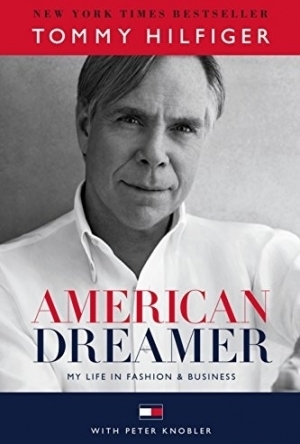
American Dreamer: My Life in Fashion & Business
Peter Knobler and Tommy Hilfiger
Book
In this tale of grit and glamour, setbacks and comebacks, business and pop culture icon Tommy...
Whatchareadin (174 KP) rated Little Fires Everywhere in Books
May 10, 2018
Mia and Pearl move around a lot, but they may have found their forever home in Shaker Heights, Ohio. They are renting the top floor of a duplex owned by the Richardson family. The Richardson's have four children who are all close in age to Pearl. When controversy hits the small tight knit community and Mrs. Richardson finds out that Mia is behind it, she will stop at nothing to find out more about this woman who has disrupted this town.
For me, this book moved very slowly. The story as a whole was good, but there was something about the writing that I just couldn't connect with. The story was told from everyone's point of view, but at times it seemed like that changed in mid-sentence.
Mia is the kind of woman, I think a lot of us wish we could be. She is artistic and carefree. She is an attentive mother and compassionate with her fellow co-workers. But she can't sit still. Every few months, she and Pearl are on the move again for one reason or another. For Pearl, she doesn't mind so much. She has never been able to make and keep friends easily, so it feels good to start over. But Shaker Heights is different. Immediately, she befriends, Moody, the Richardson's youngest son. They have an instant bond. Pearl begins to spend afternoons at their house and walks back and forth to school with Moody. Making friends feels good to Pearl and she is glad that they have decided to spend a little more time in this town than most.
Mia works all kinds of odd jobs to support her in Pearl why she works on her photography. Mia has sold many pieces through an art gallery in New York. Sometimes the pieces go quickly and other times they do not. While in Shaker Heights, Mia is working the take out counter for a Chinese Restaurant. There she befriends a girl who becomes a part of the center of the controversy. With Mia's help this girl finds the strength she needs to do what is necessary.
Mrs. Robinson works as a reporter for the local paper. Covering various events throughout the town. Mrs. Robinson likes Mia and Pearl when they move in, and she even offers Mia a job to do some light housekeeping and cooking at their house. But maybe they shouldn't have allowed Mia to get so close. Maybe then one of her best friends would not have to go through the turmoil she is currently in.
I think many people will like this book, but for me, it was just alright.
For me, this book moved very slowly. The story as a whole was good, but there was something about the writing that I just couldn't connect with. The story was told from everyone's point of view, but at times it seemed like that changed in mid-sentence.
Mia is the kind of woman, I think a lot of us wish we could be. She is artistic and carefree. She is an attentive mother and compassionate with her fellow co-workers. But she can't sit still. Every few months, she and Pearl are on the move again for one reason or another. For Pearl, she doesn't mind so much. She has never been able to make and keep friends easily, so it feels good to start over. But Shaker Heights is different. Immediately, she befriends, Moody, the Richardson's youngest son. They have an instant bond. Pearl begins to spend afternoons at their house and walks back and forth to school with Moody. Making friends feels good to Pearl and she is glad that they have decided to spend a little more time in this town than most.
Mia works all kinds of odd jobs to support her in Pearl why she works on her photography. Mia has sold many pieces through an art gallery in New York. Sometimes the pieces go quickly and other times they do not. While in Shaker Heights, Mia is working the take out counter for a Chinese Restaurant. There she befriends a girl who becomes a part of the center of the controversy. With Mia's help this girl finds the strength she needs to do what is necessary.
Mrs. Robinson works as a reporter for the local paper. Covering various events throughout the town. Mrs. Robinson likes Mia and Pearl when they move in, and she even offers Mia a job to do some light housekeeping and cooking at their house. But maybe they shouldn't have allowed Mia to get so close. Maybe then one of her best friends would not have to go through the turmoil she is currently in.
I think many people will like this book, but for me, it was just alright.
